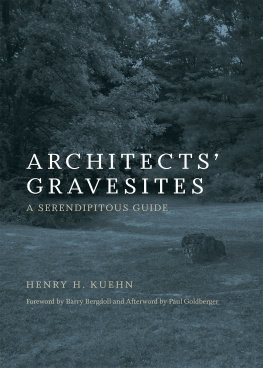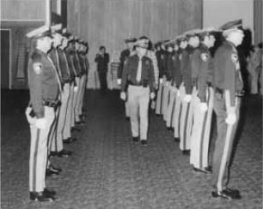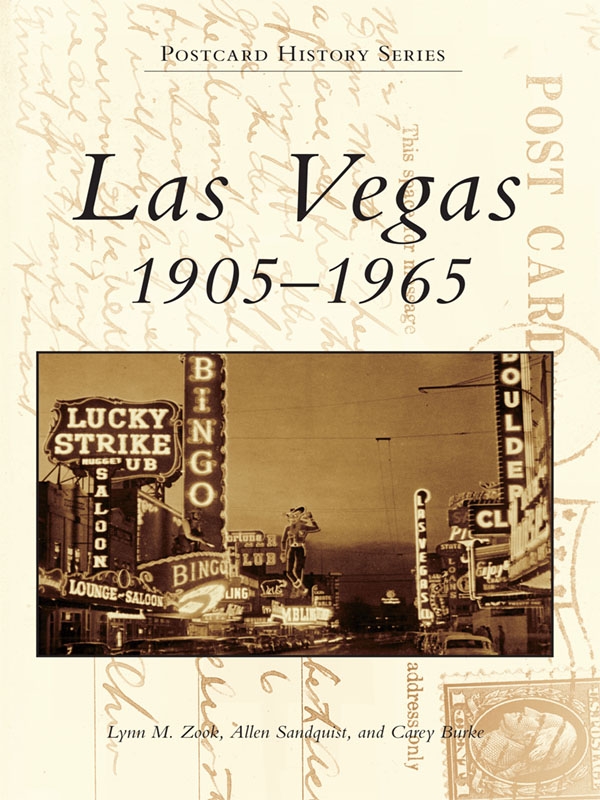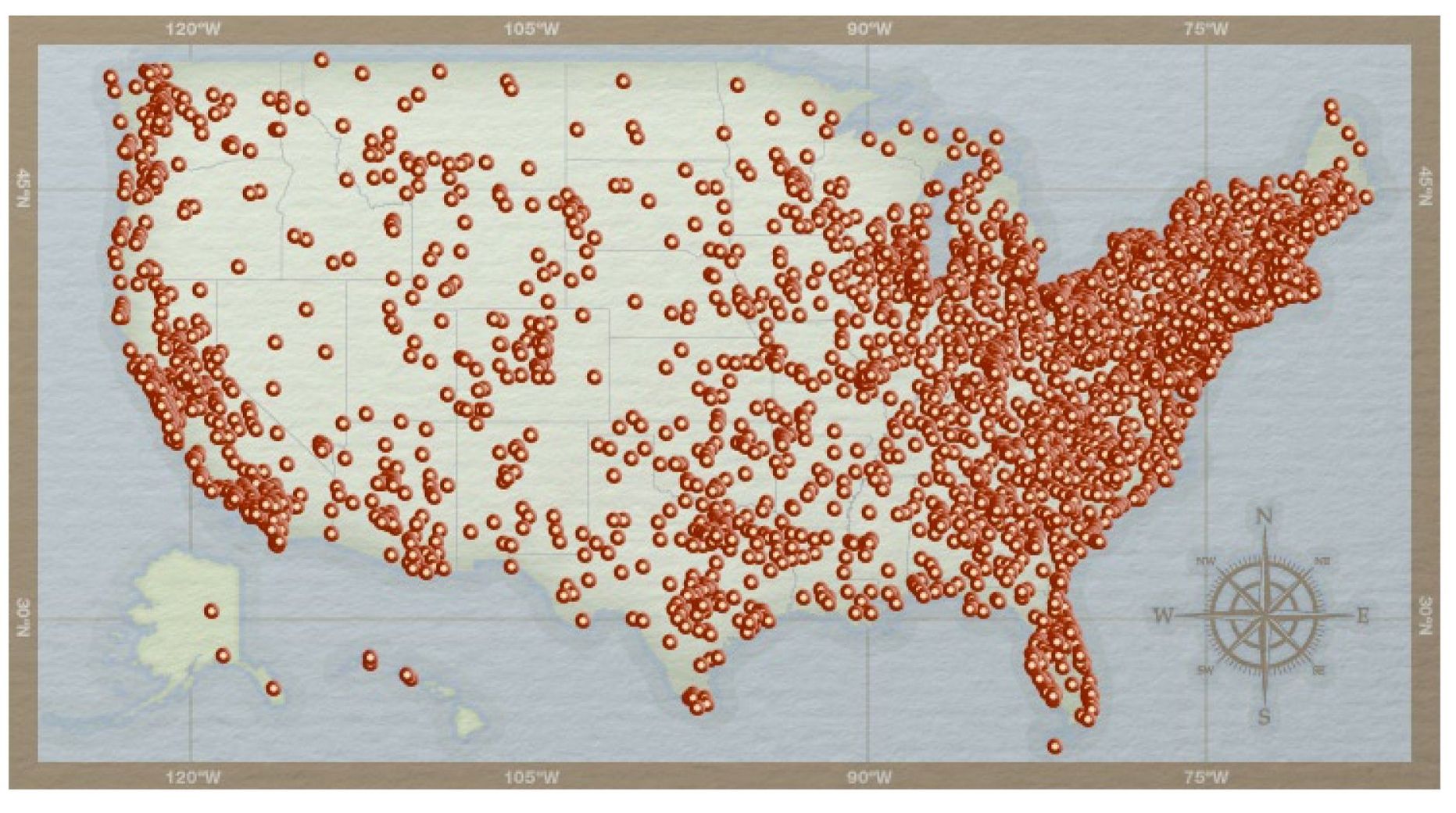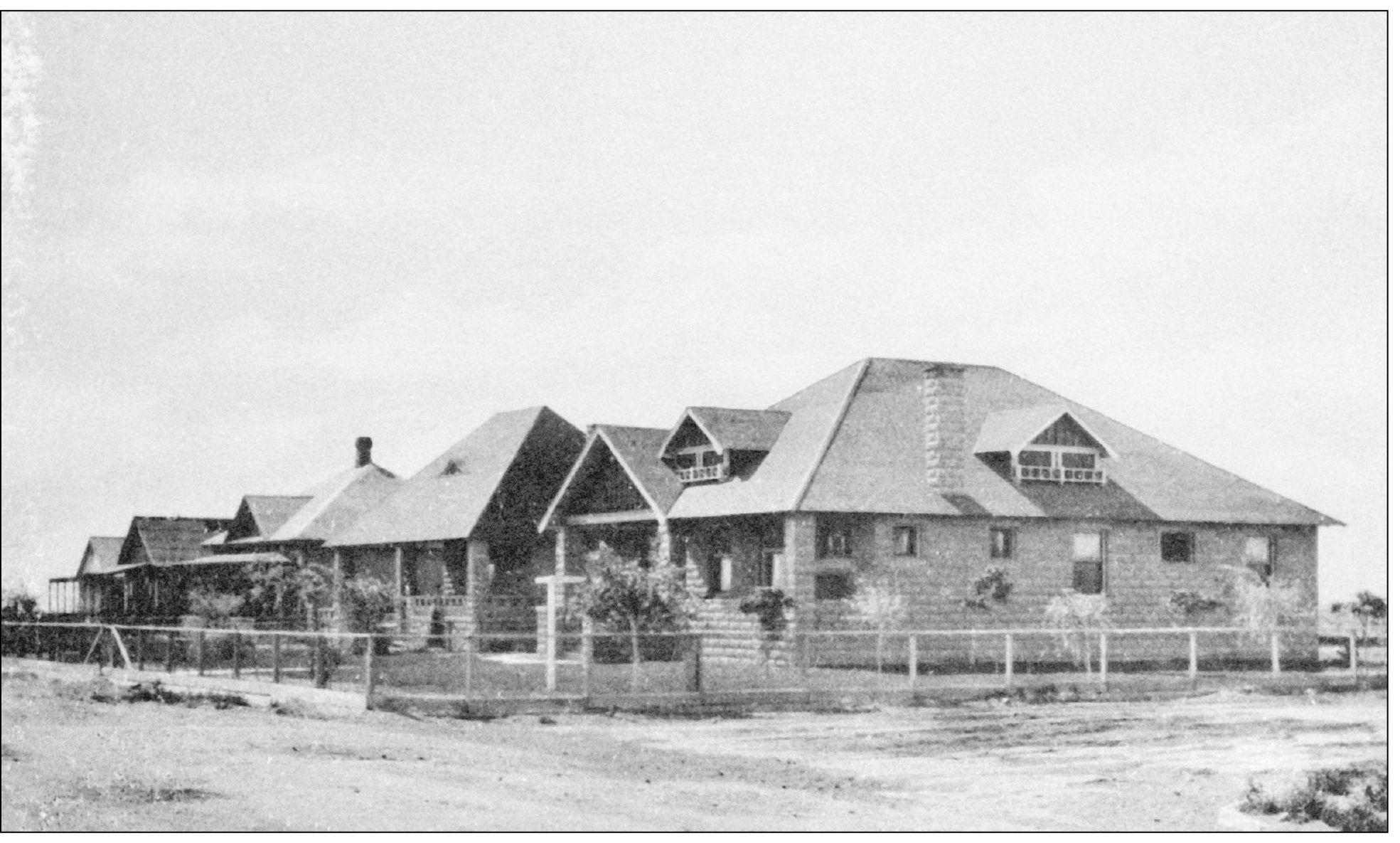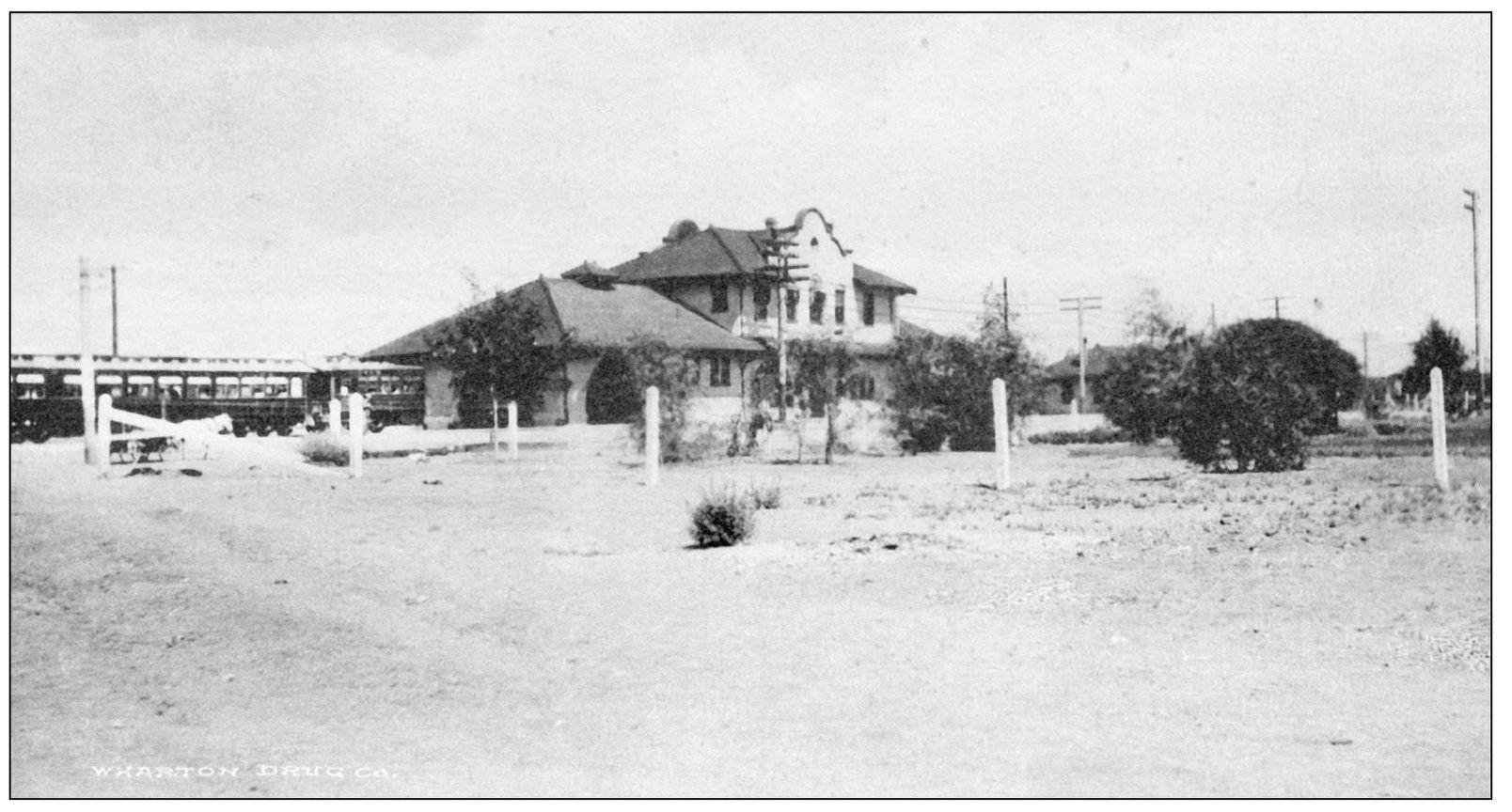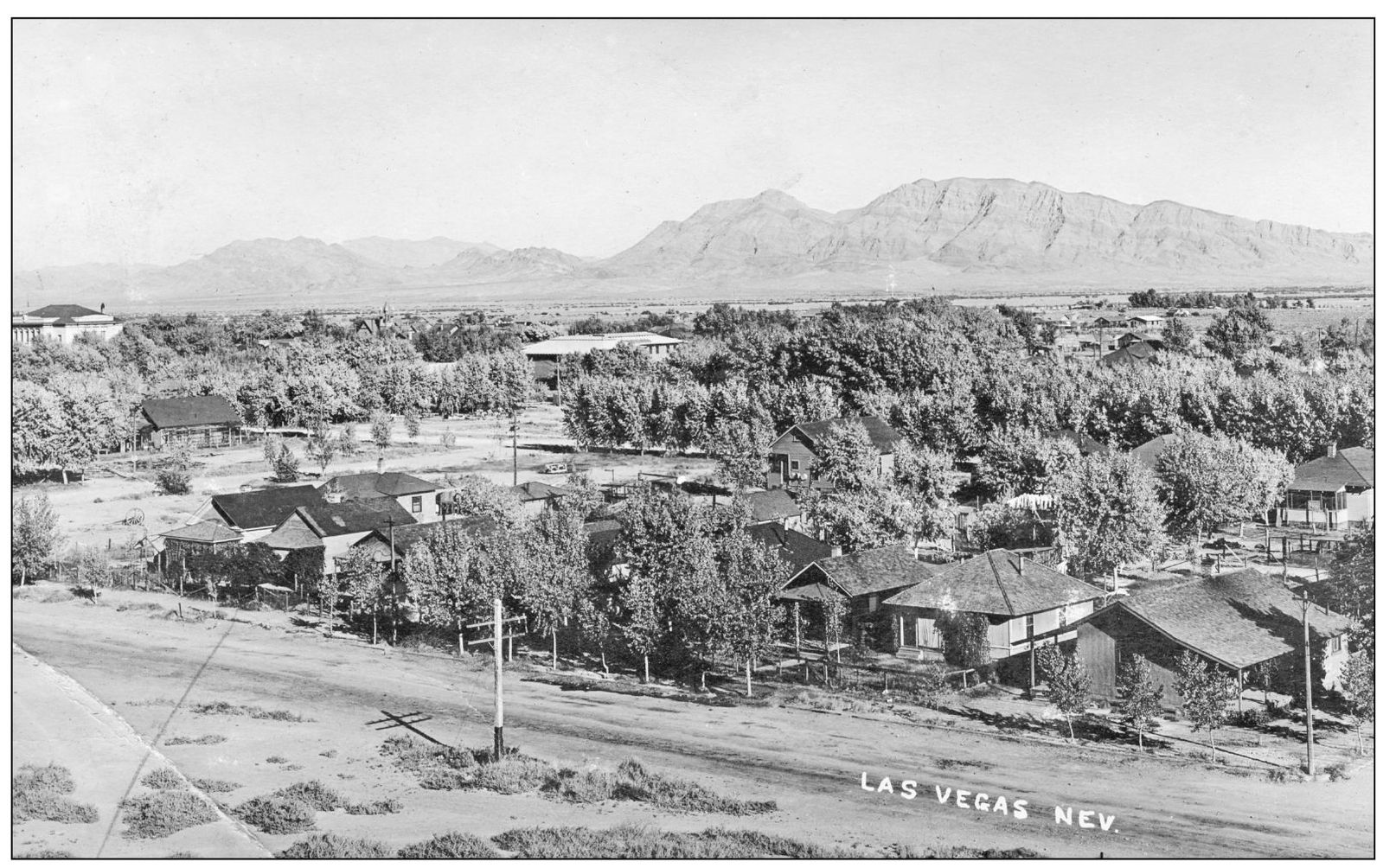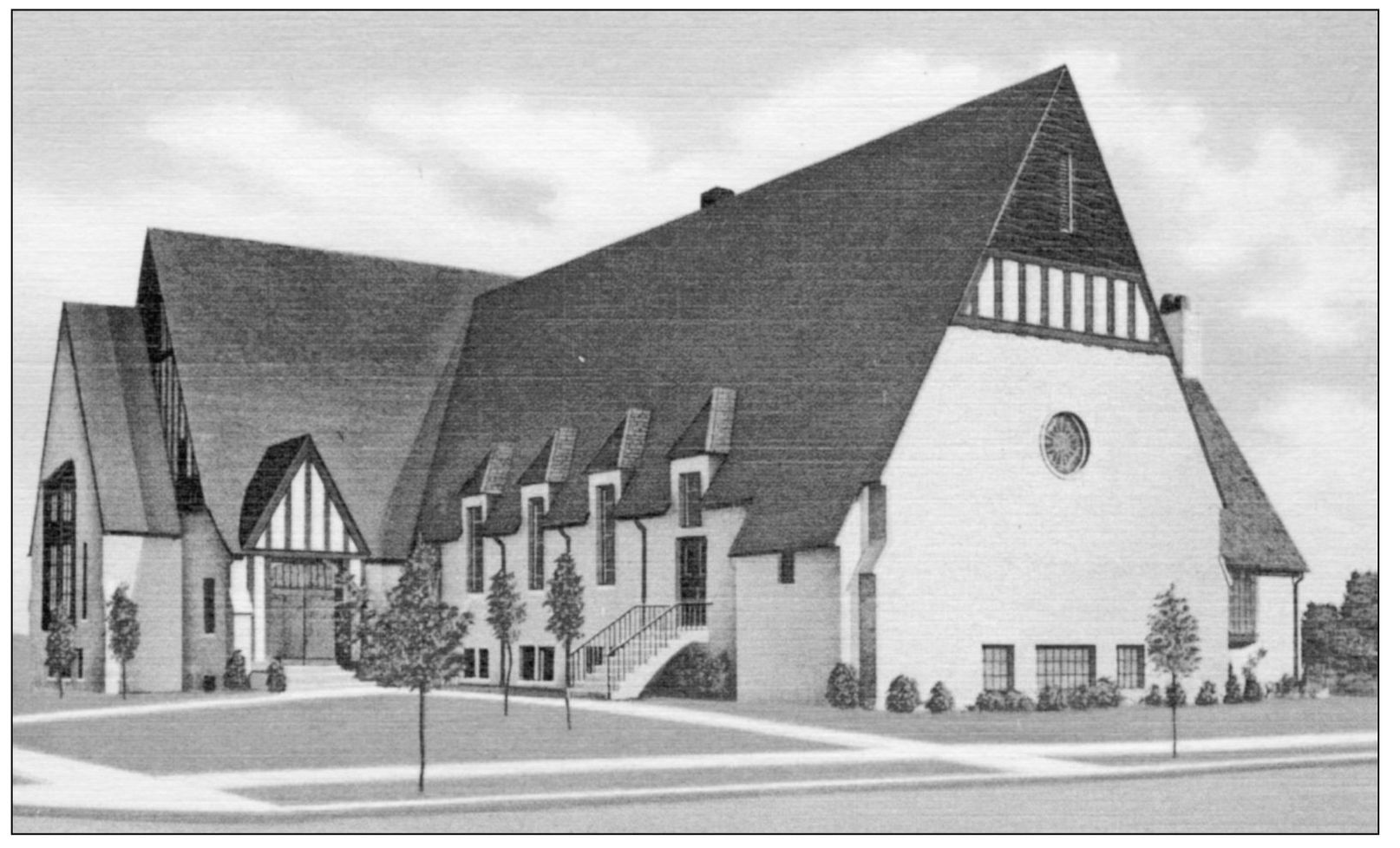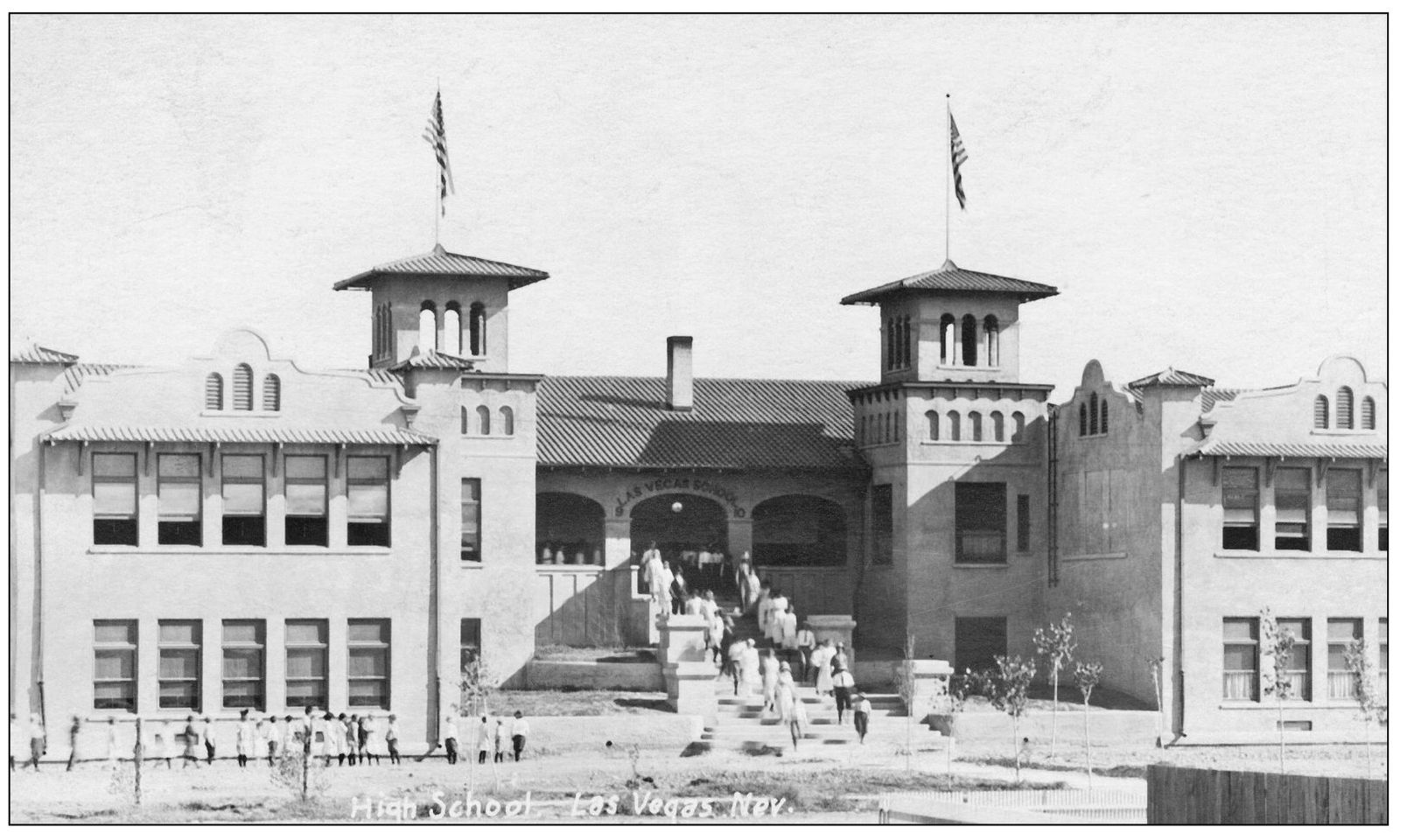One
EARLY DAYS
Las Vegas was founded in May 1905. Sen. William Clark of Montana had purchased the 1,800-acre Stewart Ranch from pioneer Helen Stewart in 1902 with the intent that Las Vegas would be a watering stop for the rail line he was buildingthe San Pedro, Los Angeles, and Salt Lake Railroad. When the rail line was completed in January 1905, Clark had the town site laid out, and plans were readied for a land auction.
The Las Vegas Land and Water Company was in charge of the auction. The railroad offered special rates from both Los Angeles, California, and Salt Lake City, Utah. Passengers could use their fares to help pay for their land.
On May 15, 1905, amid temperatures that climbed well over 100 degrees, more than 1,000 people gathered near a wooden platform just east of the train depot. At 10:00 a.m. bidding began. Prices ranged from $100 to $500 for residential lots. Corner lots ran as high as $750. The railroad also guaranteed that buyers would have access to the rail yards.
Fremont Street was considered the best location for businesses, and many of these lots went for top dollar. Not all the lots were sold on that day, and the auction resumed the following morning.
There were restrictions on the lots. Liquor sales were prohibited except on Blocks 16 and 17. So those two blocks were quickly filled with saloons and houses of ill repute.
The little community went to work as businesses and homes began to spring up not only on Fremont Street, but on the side streets as well.
Across from the train depot, two hotels were built, as well as restaurants that catered to the train passengers.
The men and women who pioneered the town site knew that they had their work cut out for them: to carve a community and home out of the dirt and heat of the desert.
Many people think that there was nothing in Las Vegas prior to the hotels being built on the Las Vegas Strip. The story of the land auction and the community that was carved out of the desert gets lost in the myths of Bugsy Siegel and the mob. Of course, those are colorful myths. People really lived in Las Vegas from the beginning. The first house was built by Chris Brown. It was later owned by Fred Siebert, whose wife was sister to Gov. Tasker Oddie. The second house was owned by Charles Pop Squires. Squires was the publisher of the Las Vegas Age newspaper. His wife, Delphine, was a founding member of the Mesquite Club, one of the first service organizations. Many of the Mesquite Clubs functions were held here. The Squires were a beloved pioneer family. The third house was occupied by Nickolas and Hazel Williams. These houses stood on what is now the southeast corner of Fourth and Fremont Streets. Today it is where Fitzgeralds Casino stands. (NSM, LV.)
This is the Stewart Ranch. It was also a way station for travelers crossing the desert. Archibald and Helen J. Stewart had taken over the ranch and turned it into a success. After Archibald was killed, Helen and her children continued to live here. She finally sold the ranch and the water rights to Sen. William Clark. (NSM, LV.)
This Spanish Missionstyle structure was the first permanent train depot in Las Vegas. This 1913 postcard dates to when the building was the depot for the San Pedro, Los Angeles, and Salt Lake Railroad. This depot was torn down in the 1940s and was replaced with a Streamline Modernestyle building. That depot was torn down in the late 1960s to make room for the Union Plaza Hotel. (NSM, LV.)
This early photograph of Las Vegas shows not only homes, but also an abundance of cottonwood trees. Water was the life force of the community in those early years. This postcard is of Main Street, just south of Fremont Street. In a few years, this will be a bustling part of town. (NSM, LV.)
The Church of Latter-day Saints originally settled Las Vegas back in the 1850s. However, the harsh living conditions caused them to abandon the fort they had built and return to Utah. After the land auction, many Mormons moved to Las Vegas. This is one of the first churches built for their faith. However, there were other faiths practiced in the community. (NSM, LV.)
In 1910, the cornerstone was laid for the Fifth Street School. Previously classes had been held in wooden structures, but they burned down, and the citizens realized the need for a more permanent school. When the school opened in 1911, it catered to all classes from elementary to high school. Students from remote areas of the valley were invited to stay with townsfolk for the duration of the school year. (NSM, LV.)





